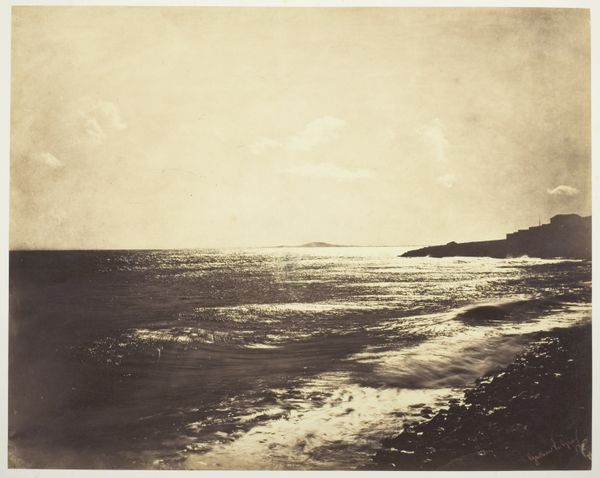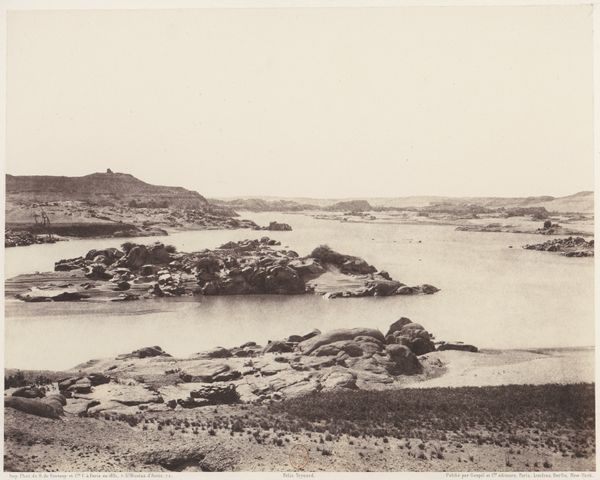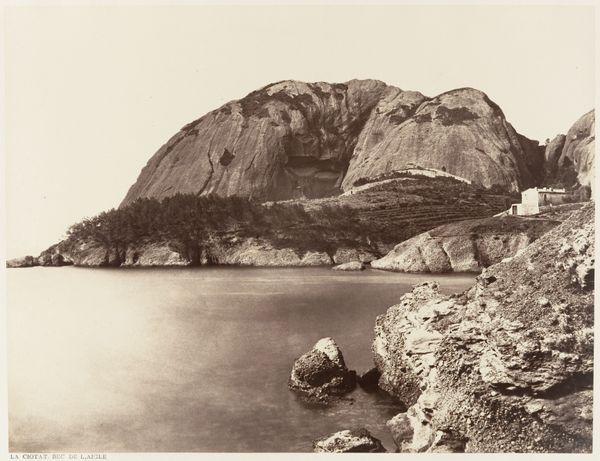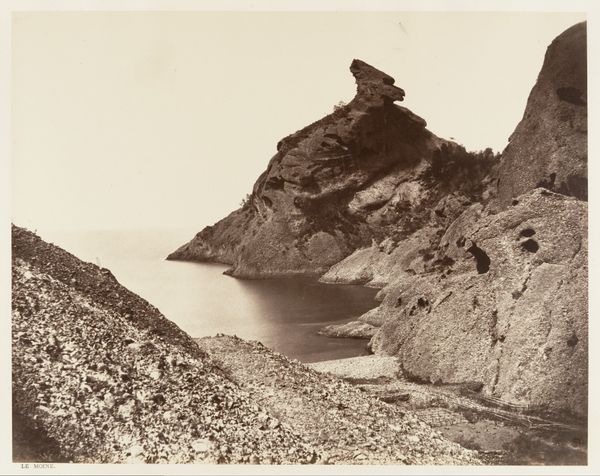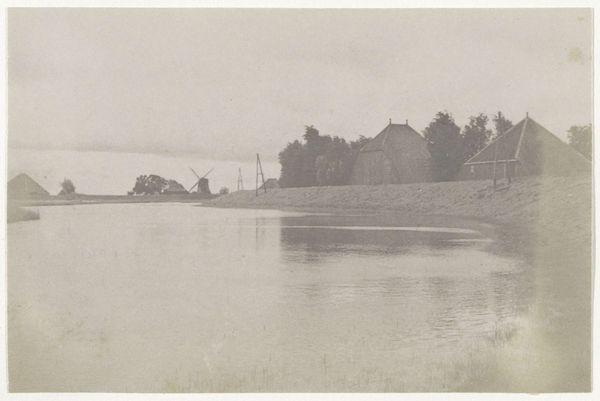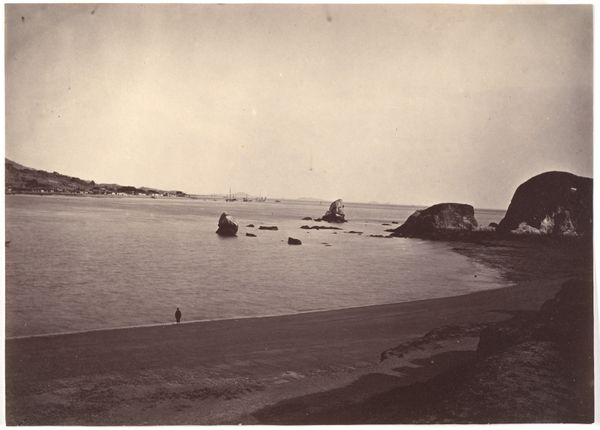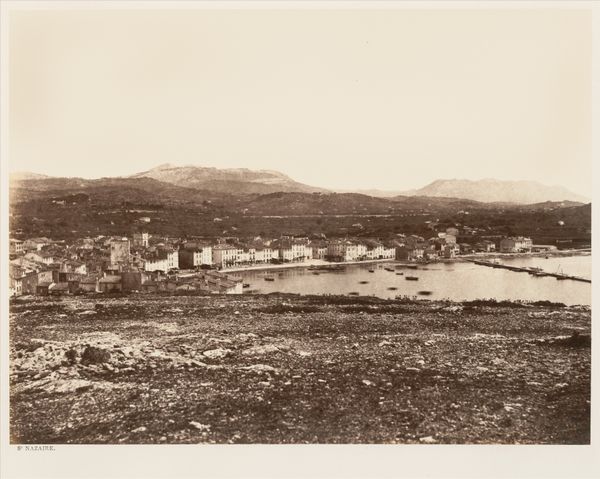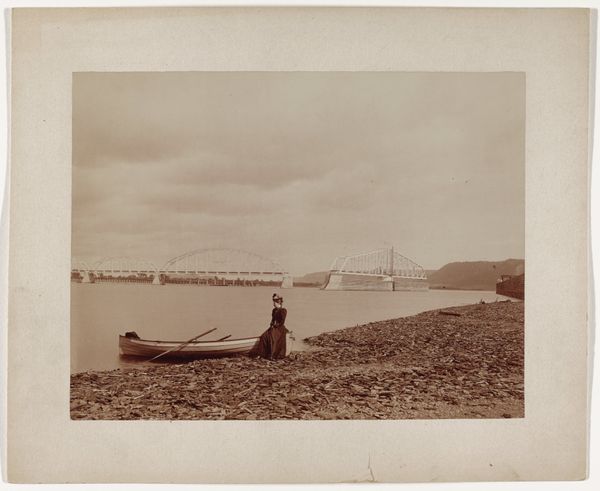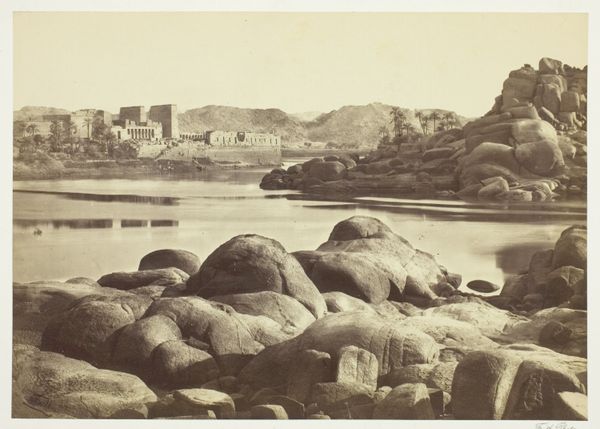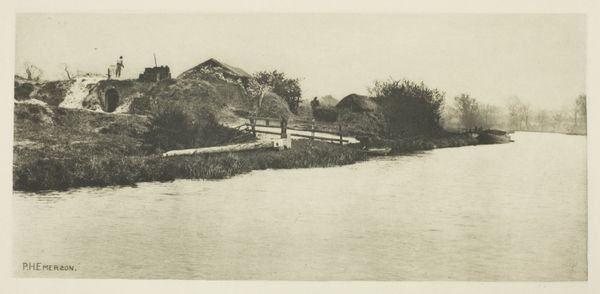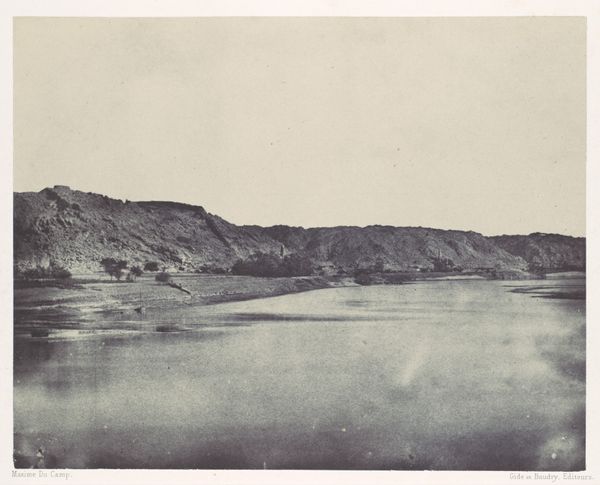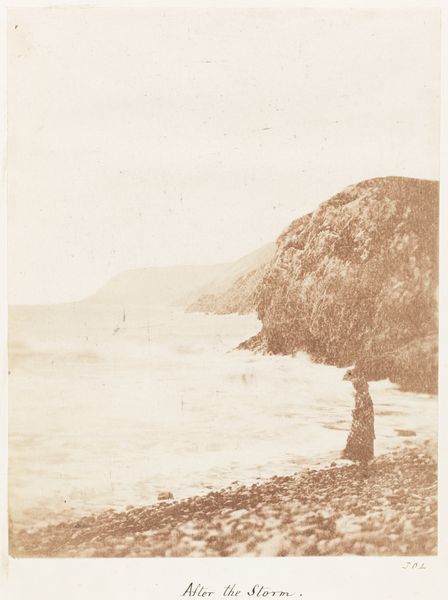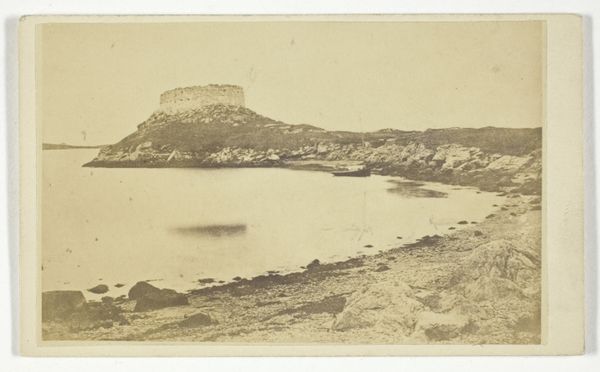
Dimensions: Image: 32.4 x 43 cm (12 3/4 x 16 15/16 in.) Mount: 46 x 60.5 cm (18 1/8 x 23 13/16 in.) Mount: 55.9 x 71.1 cm (22 x 28 in.)
Copyright: Public Domain
Editor: Here we have Edouard Baldus's "La Ciotat," a landscape taken sometime between 1859 and 1861, created using an albumen print. There’s almost a ghostly quality to it – the tones are muted, and the water looks like a sheet of glass. What strikes you most about this photograph? Curator: What immediately captures my attention is the labor embedded in both the scene and the photograph's creation. Consider the monumental, defensive architecture – each stone quarried, transported, and placed. Now think about Baldus: lugging cumbersome photographic equipment across the landscape, preparing glass plates, and meticulously controlling the chemical processes for each print. Can you imagine the sheer physicality involved in producing this image in the 19th century? Editor: It does sound incredibly laborious. I hadn't really considered that side of it. So, the materiality and the production itself becomes a significant part of the artwork's meaning? Curator: Precisely! The albumen print itself is key. This process, involving egg whites, gave photographers an ability to produce finely detailed prints. In this case, the process emphasizes both the solid, man-made constructions and smooth stillness of the sea. How might the economic forces driving urban development influenced both the construction of the city of La Ciotat and this very commission? Editor: Interesting. It makes me consider photography itself as a form of labor, transforming landscapes into commodities for consumption. Were these photographs typically viewed as art at the time, or more as documents? Curator: The lines were deliberately blurred. Baldus was employed to document the transformation of the landscape but, through his choices of composition, light, and printing process, he elevated these scenes beyond mere record-keeping. This photograph becomes evidence of how technological advancements, the social reshaping of urban planning, and economic considerations intertwine. Editor: This really changes my perception of the piece. I now see “La Ciotat” not just as a landscape, but also a document of a very specific intersection of labour and technology in the mid-19th century. Curator: Indeed, and hopefully encourages us to consider art beyond its aesthetic value and interrogate the materials and processes used to shape our environment.
Comments
No comments
Be the first to comment and join the conversation on the ultimate creative platform.
